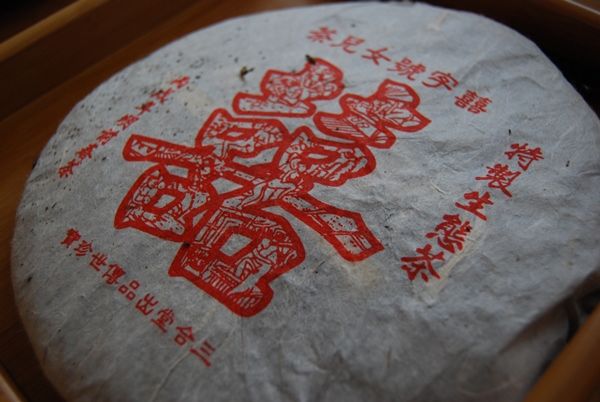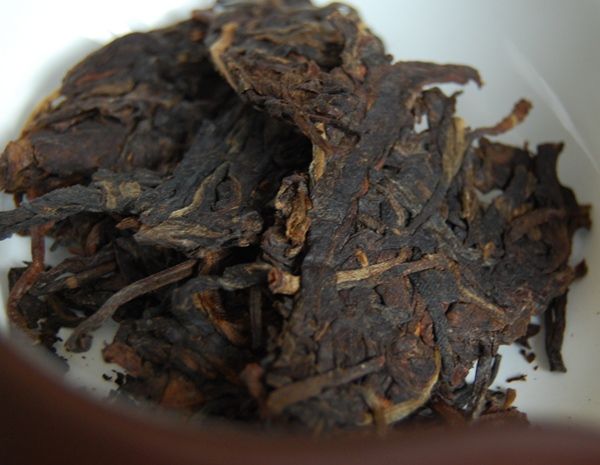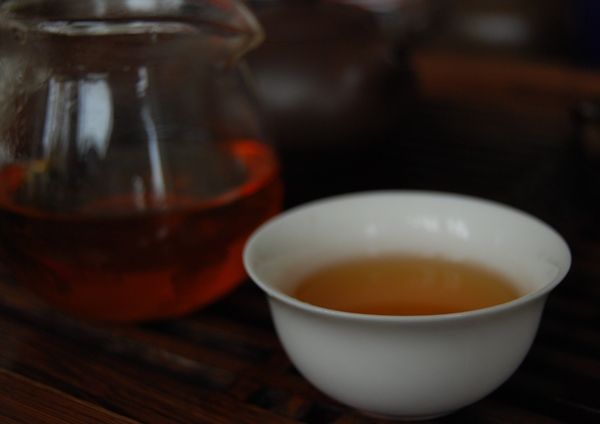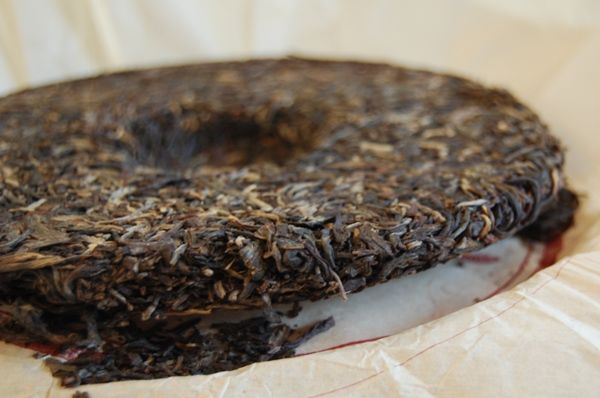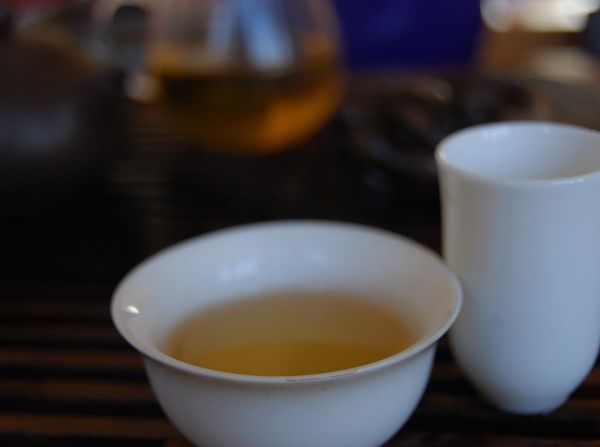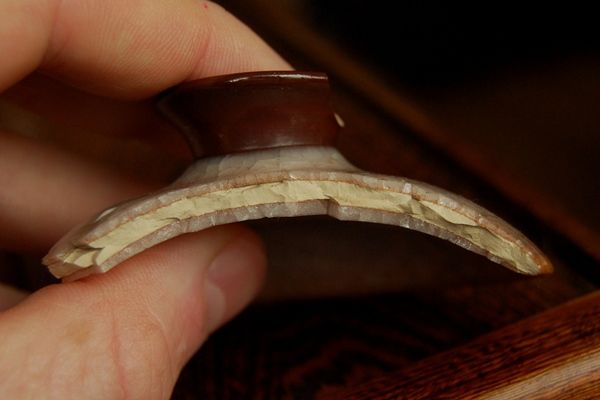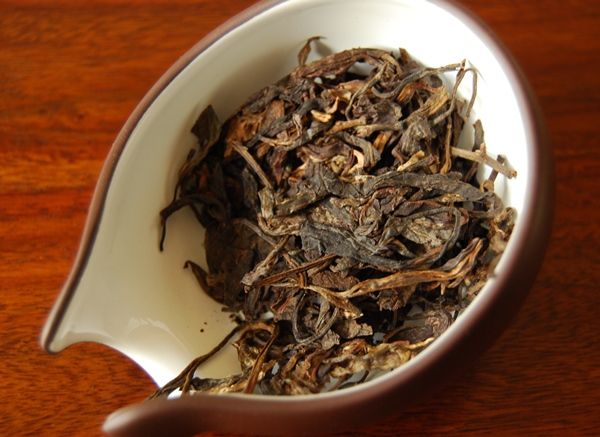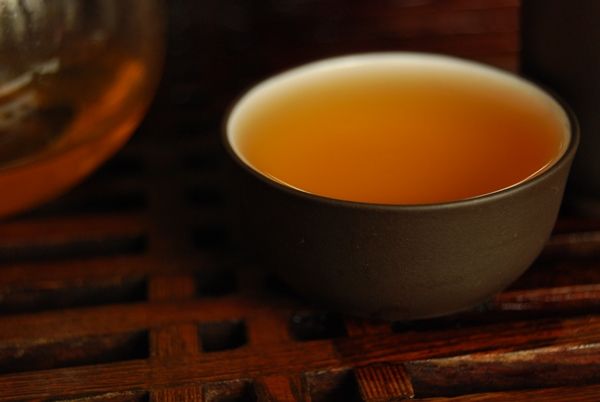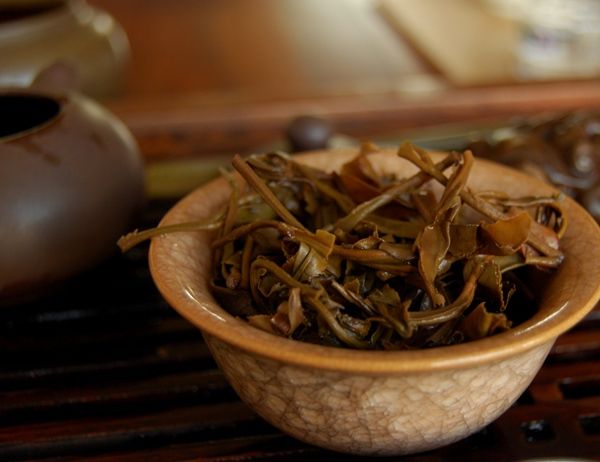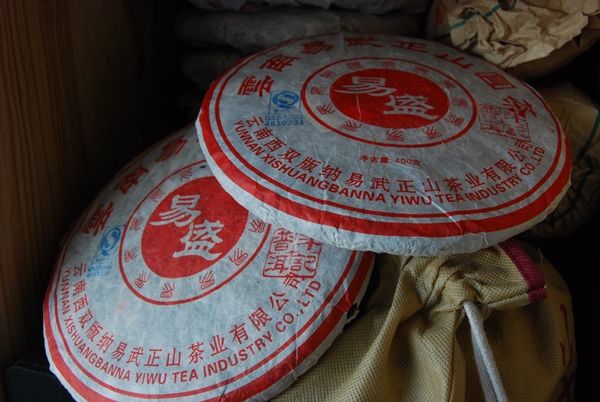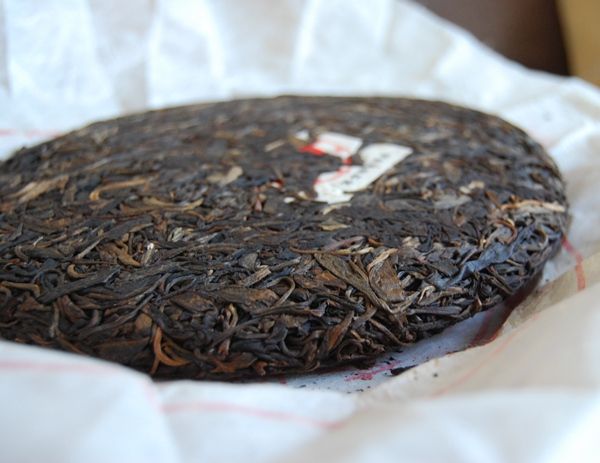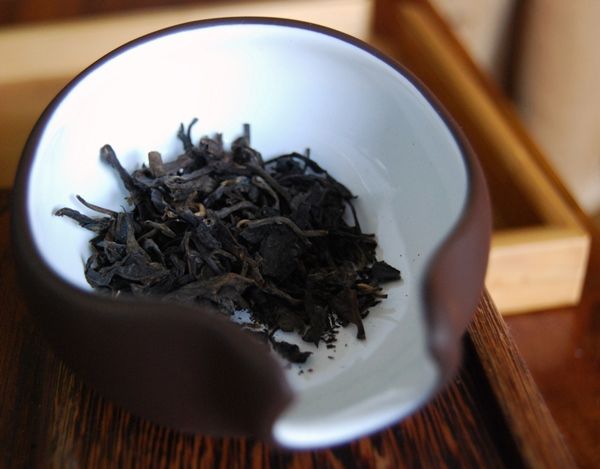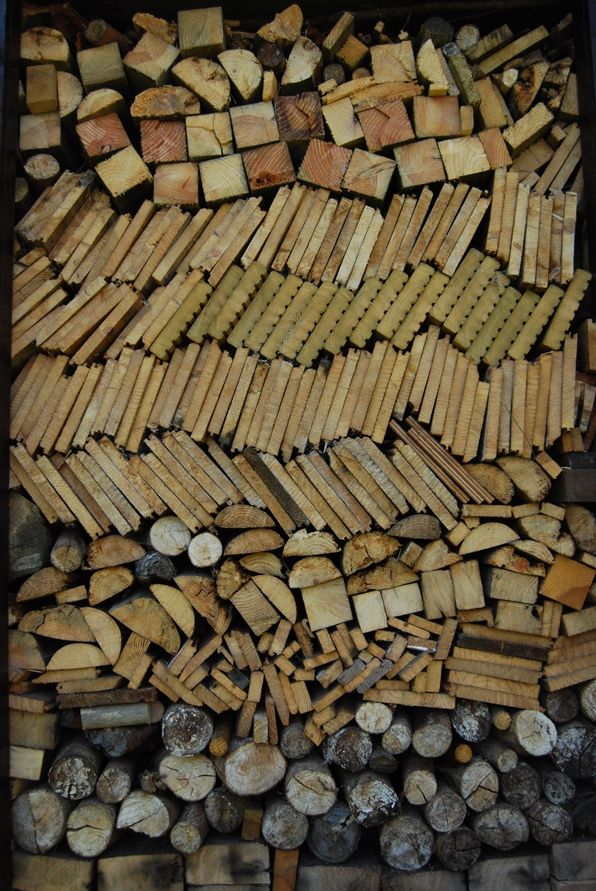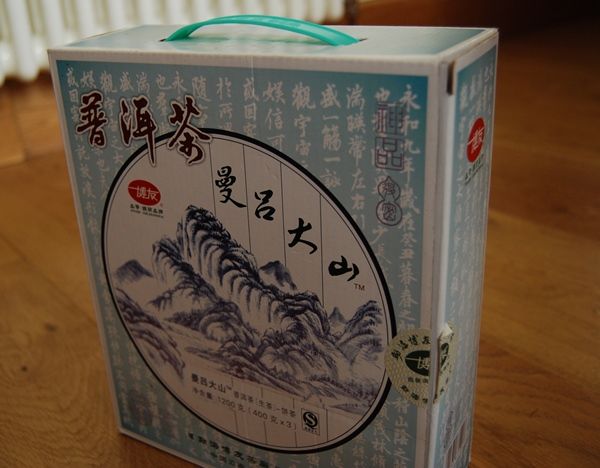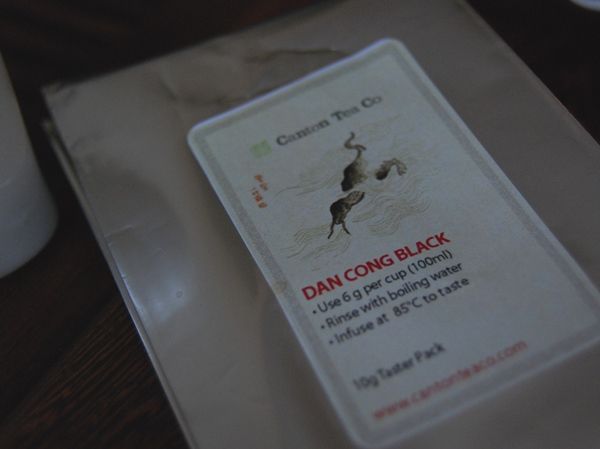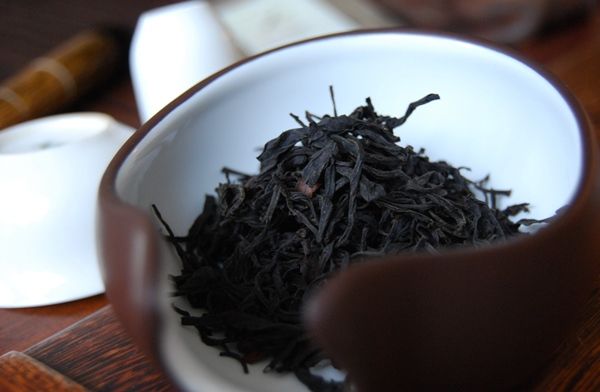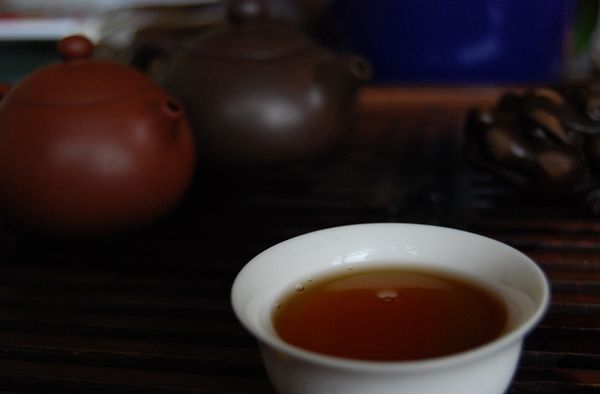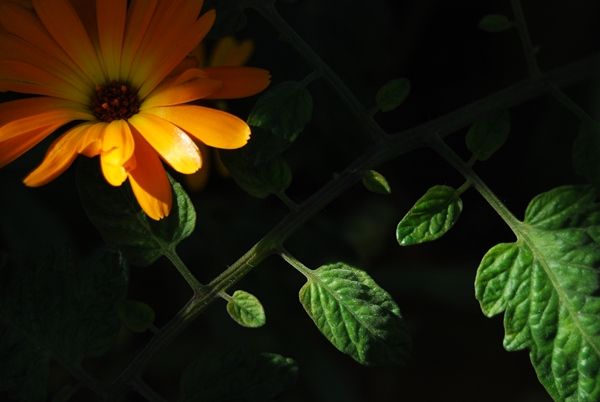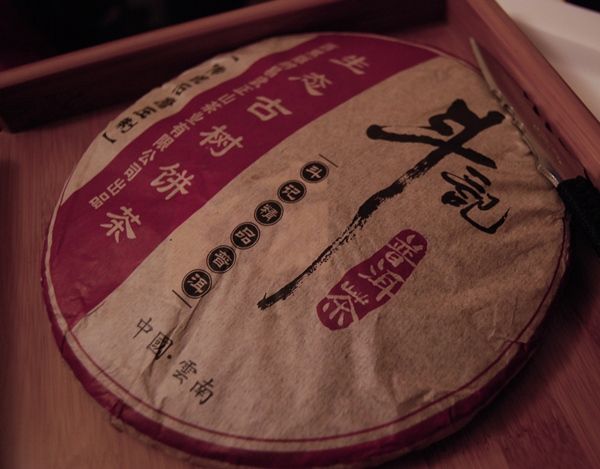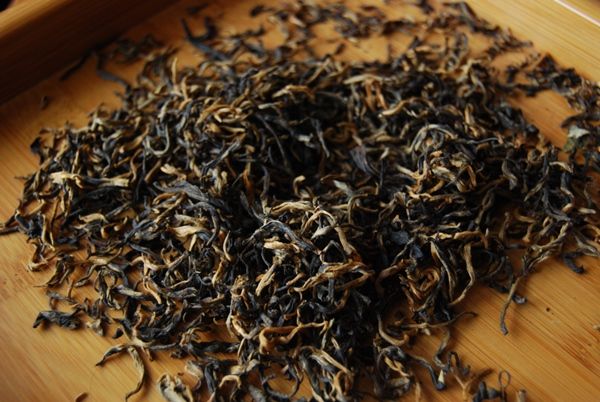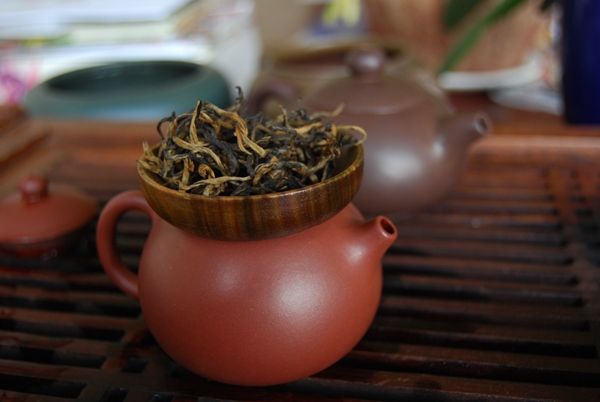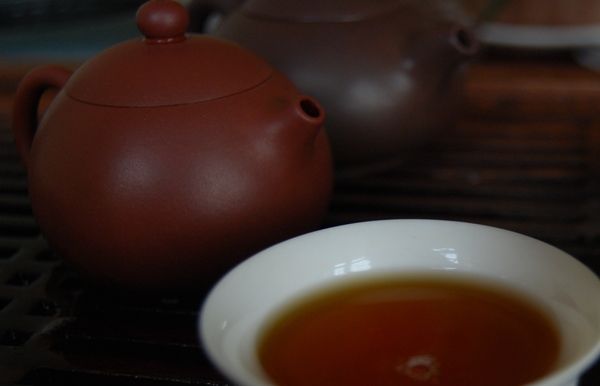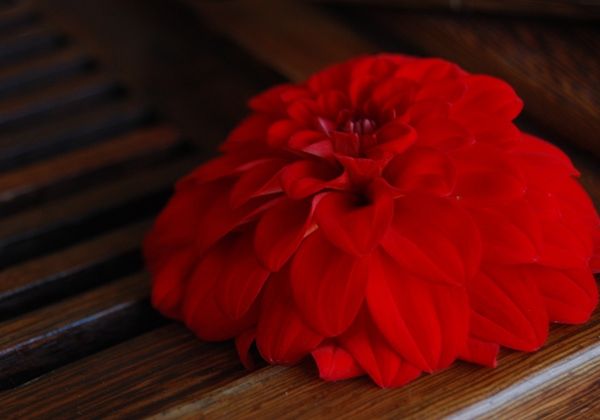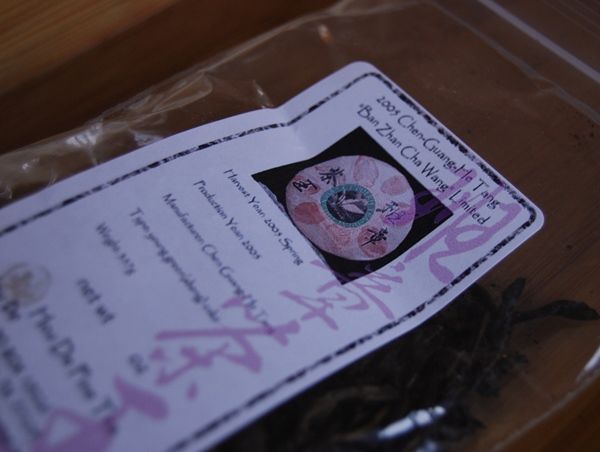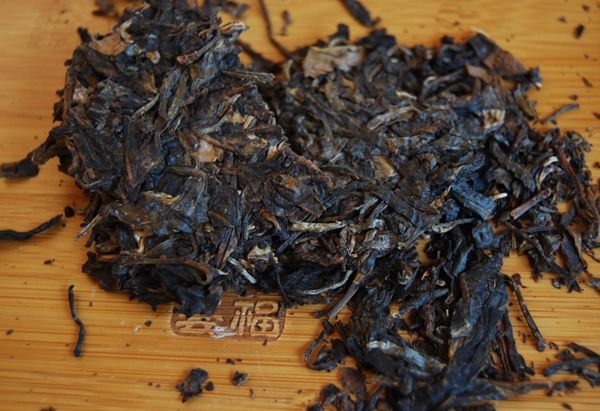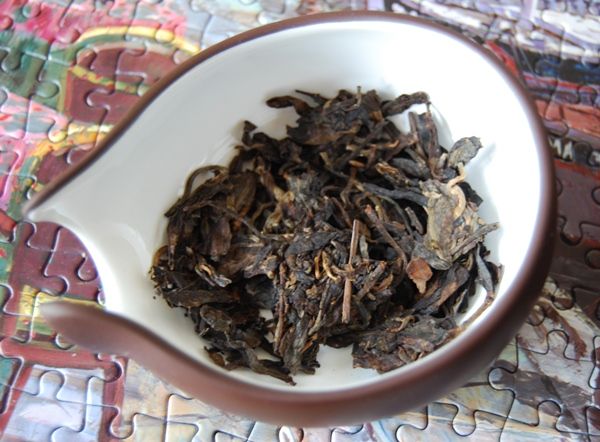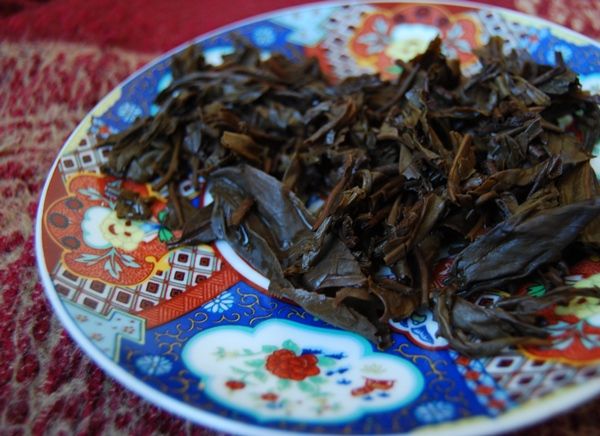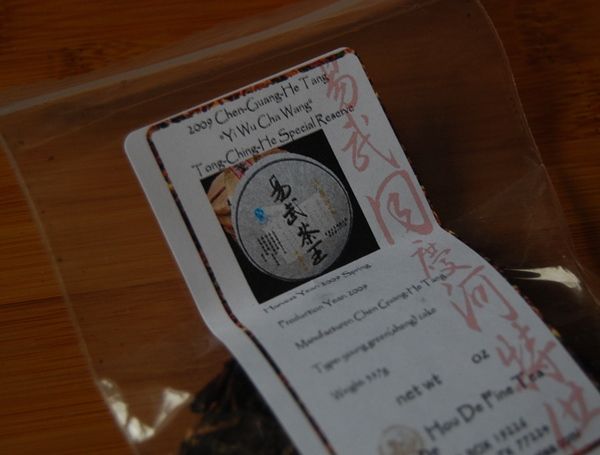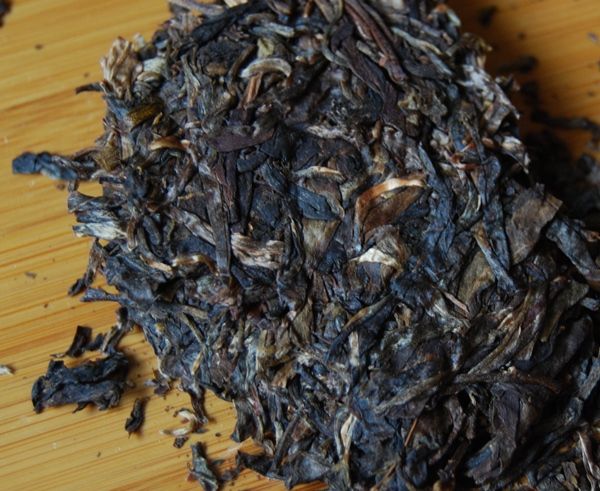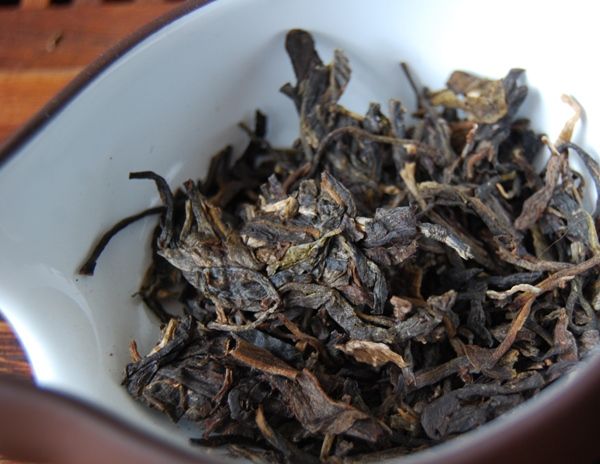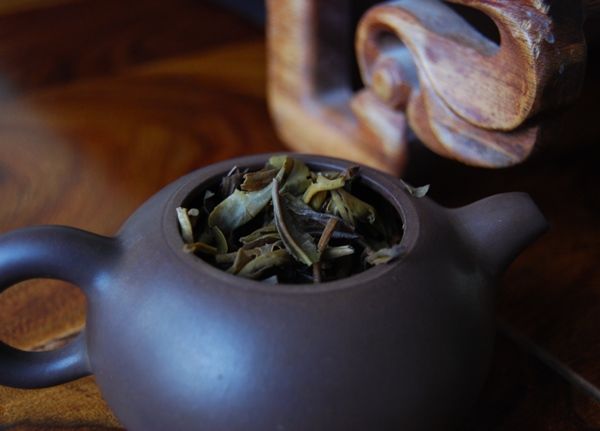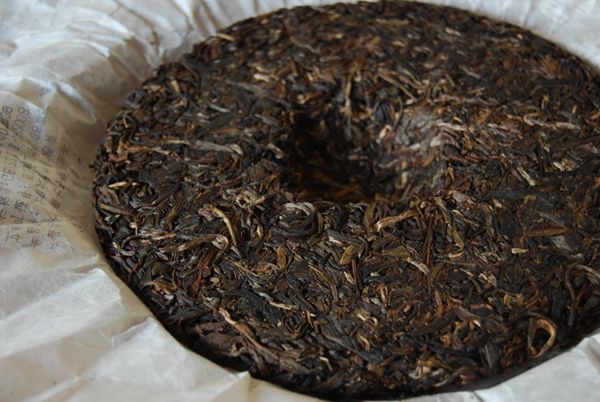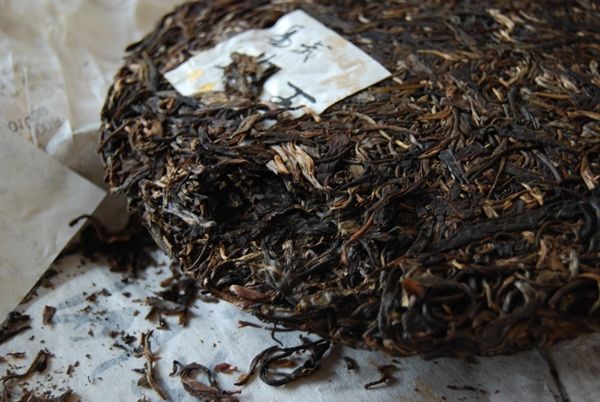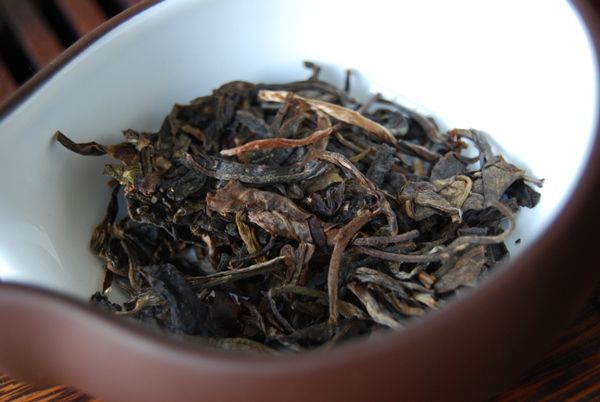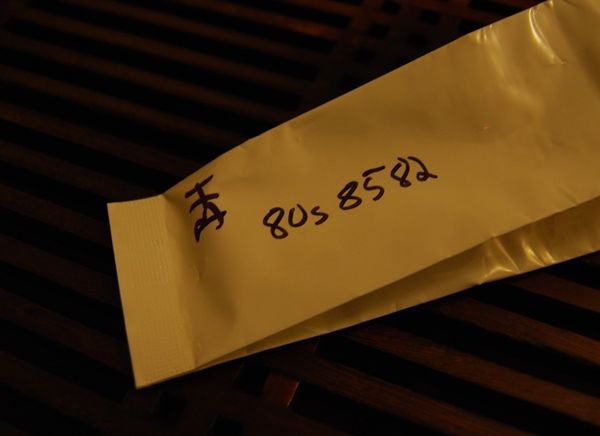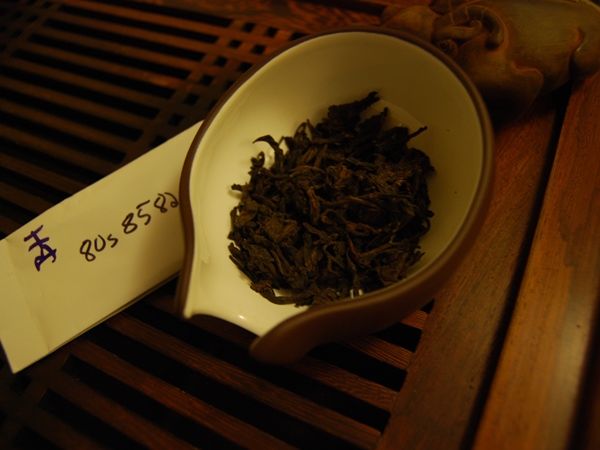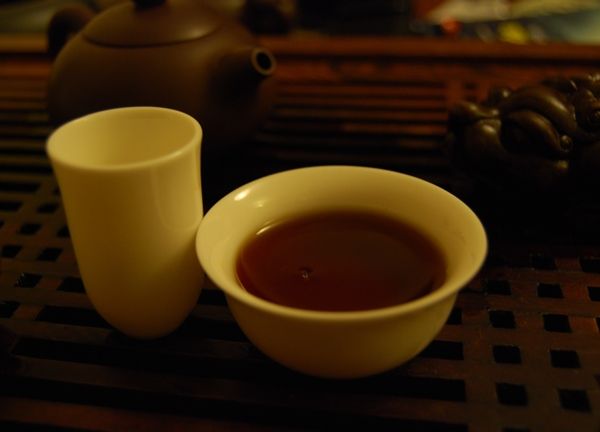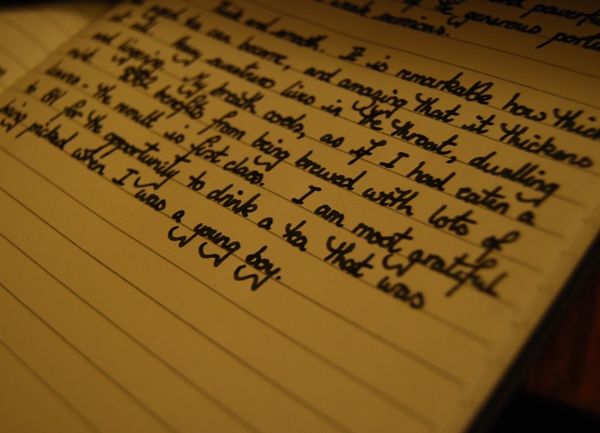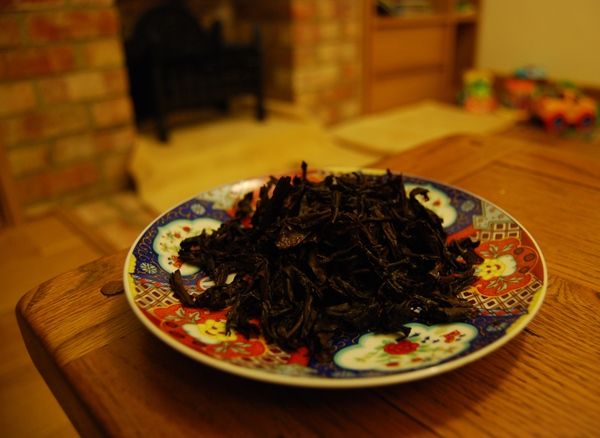Mr. Chen Zhitong looks exactly as one would expect, given his reputation as a shrewd businessman. I recall that even the vendors in Maliandao with whom I chatted (in my woeful attempt at Mandarin) had very fixed opinions concerning him. However, saith what thou wilt about the man himself, he does know how to make mighty fine tea.
Chenguanghetang cakes are never inexpensive. However, this little chap weighs in at a (relatively) modest $69. In his notes at
Houde, Guang suggests that this tea may perhaps be less potent than another cake being sold at the same time, the 2005 Banzhang (more on which later). This allows me to increase automatically the quantity of leaves that I use for the session.
What fragments they are, these leaves. As with many of my teas in the winter air, they seem to sleep, and do not give pronounced aromas when dry.
These slumbers are dispersed when water is introduced, and they wake instantly into a heavy, sweet tobacco scent that lingers in the nose for many minutes.
The result of using all those leaves is a potent, pleasantly sharp mouthful of that heavy tobacco, with a fundamental sweetness that builds slowly in the throat to a crescendo. It is clean, cooling, and contains a very decent density of sweetness that takes hold of the tongue.
Furthermore, it endures for twenty infusions, after which time it remains the colour of its first infusions, with a continuous and substantial sweetness atop its constant tobacco base. That kind of endurance cannot be faked, and is an excellent sign for its future. Longevity seems to be a good indicator.
Perhaps my assessment of Mr. Chen's tea is merely that he happens to make tea that is exactly that which I enjoy, with its heavy tobacco and potency. Either way, the results are the same: a great session, and a decent cake. Superb stuff. It is, for example, much better than the similarly labelled
2009 Yiwu Diancang. I suspect both come from a similar budget range, although the latter I bought for $26.
If by a man's works shall we know him, then Mr. Chen is doing admirably.
Addendum
February, 2011
The last two things that I have bought from Houde have been duffers. The other was the really-rather-poor
2010 bamboo tube. Such is the allure of the two "premium" brands that Houde sells: Xizihao and Chenguanghetang.
After quite enjoying the sample, I bought a cake of this at $69, which probably means that it really costs about the same amount as the other inexpensive cake from this producer, the
2009 "Diancang", which had a similar wrapper. The latter cost around $25 via Taobaowang, and so, after Houde price inflation, I can imagine that it would come out to around $69 if sold there.
The cake looks pleasant, but is concerningly dark - it's only just over a year old, of course.
I noticed this in the sample, and so went into the purchase "with my eyes open", but the volume of the cake emphasises the message.
The first infusions reminded me of my love for this tea: although it is clearly processed, to make it "orange", the result retains plenty of potency, and is heavily tobacco-like. It enjoyed its density and its uncompromising richness.
As the infusions wear on, I begin to tire of the cake: it turns out to be fairly ordinary, and I conclude that it is significantly overpriced, at $69. My diary notes "While it could age into something decent [given its remaining potency], I would not buy it again, given the choice."
I need to be much more careful with Houde teas...

